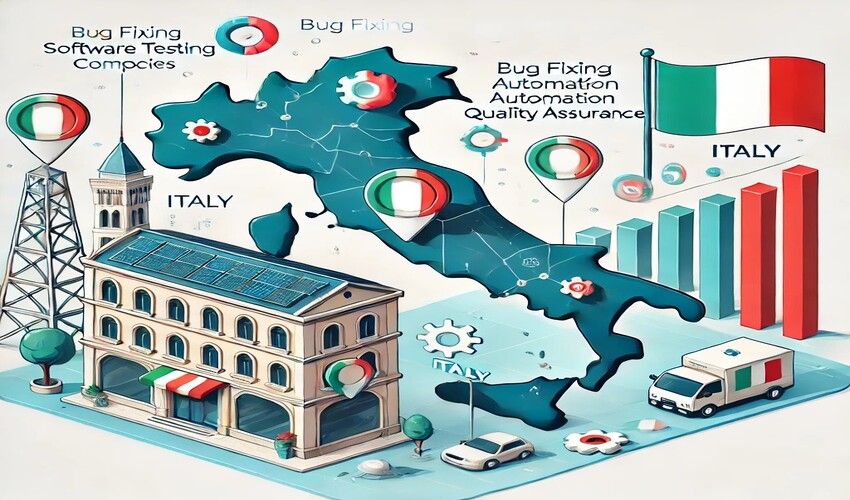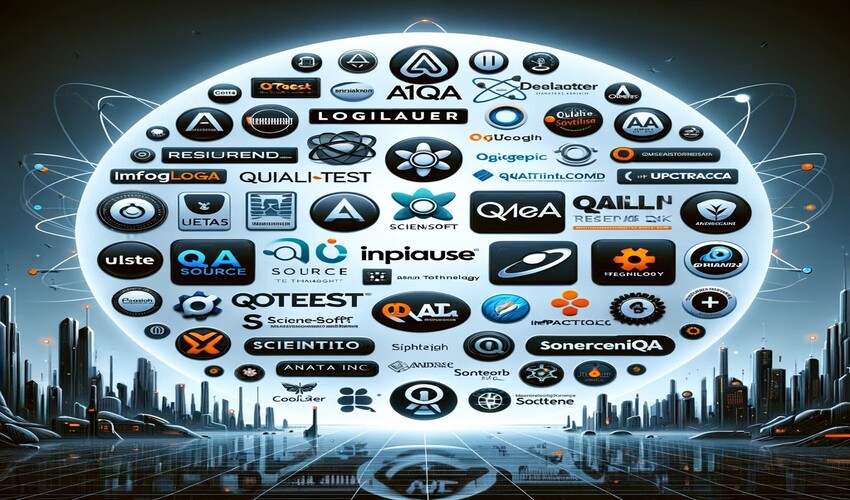Last updated on June 5th, 2024 at 01:48 pm
Making long-term applications is essential in the dynamic digital industry. Flutter, Google’s user interface toolkit, has made it easier than ever for developers to develop applications that run on web, mobile, and other platforms. According to Statista, Flutter has recently surpassed React Native to become the number one mobile app development framework.
This article will go into the newest Flutter advancements in depth to help you develop applications that can adapt to new technologies and endure the test of time.
Understanding Flutter’s Versatility
Developers need a solid understanding of Flutter’s flexibility to take full advantage of its features for developing cross-platform, future-proof applications. Flutter is great at easing cross-platform app development since it provides a single codebase for creating applications on desktop, web, Android, and iOS. Take a look at Flutter’s main features to learn more about its flexibility:
- Developing for a variety of platforms
The fact that it is compatible with all the key platforms is Flutter’s biggest selling feature. The Flutter framework automates the conversion of Dart code to native machine code for all supported platforms, so developers only have to write code once. This approach simplifies future proof app development as it eliminates the need for separate codebases for Android and iOS.
- Trustworthy user experience
The Flutter framework guarantees a consistent user experience across all platforms. Thanks to its widget-based architecture, developers can create a set of UI components at once and have them seamlessly function on every device, regardless of screen size, resolution, or form factor. The outcome of this design uniformity is an application brand that is more identifiable and satisfied consumers.
- Rapid repair
With Flutter’s Hot Reload functionality, programmers may see the immediate results of their code changes. This kind of rapid iteration makes exploring, troubleshooting, and enhancing the app’s functionality a breeze. Because it consistently works across platforms, Hot Reload speeds up mobile app development and simplifies it.
- Evolving structure
The UI will dynamically adapt to changes in the application’s state, made possible by Flutter’s reactive design. This method makes it considerably simpler to create user interfaces that are both interactive and adaptive. Because of its responsive nature, Flutter improves the user experience on both mobile and web platforms, making it more engaging and responsive.
Mastering Mobile App Trends
It is crucial for developers to learn mobile app trends inside the Flutter framework if they want to design creative applications that fit current market expectations. Developers need to keep their heads in the game and always chase after the last innovations produced by mobile technology to come up with applications that not only perform well under the given platform but also satisfy users.
- Integration of augmented reality (AR) and virtual reality (VR)
The technology enjoys growing popularity in the mobile industry, with people tending to install apps on their smartphones that have AR and VR capabilities. Integrating AR/VR with Flutter can be achieved through the providers of its plugins and packages. The opportunities in developing developer experiences are boundless notwithstanding whether one involves himself to VR or AR as an immersive interface.
- Machine learning and artificial intelligence (AI):
With machine learning and artificial intelligence progressing continuously, mobile apps are as intelligent as possible making their AI programming personalized for the user. Developers have no issues in using AI approaches and machine learning models with Flutter. Flutter can also allow developers to add up advanced facilities such as image recognition, predictive analytics, and natural language processing into their mobile apps.
- Flutter for wearable devices
wearable tech has many forms offered by the manufacturers of activity tracker and smartwatches; this is an area which has blossomed into a big sector. Flutter, note its flexibility allows programmers to develop such apps which can be synchronized with wearables as well effectively like mobile devices. This change further provides ground for the creation of integrated solutions that can be used by the customers on various devices.
- Dark mode
As the audience has discovered that dark mode is far more visually pleasing, and energy-saving; Dark mode has also quickly emerged as a favorite amongst the users.
In order to develop dark mode and theming, you will have the opportunity to use Flutter in a much faster way. To be a master of such a trend, the apps developed should allow users to select their preferred style in dark mode with smooth switching back and forth between light and dark backgrounds.
Harnessing Flutter for Web Development
The flutter is a good option that web developers can make use of in order to develop cross platform applications which run smoothly on mobile and online platforms. Since the advent of Flutter that gradually comes to act as a part of web programming, developers can make use of their predisposed skills in order to develop hefty but responsive web applications.
With the help of Flutter for web, developers can write their applications just once to make them respond as much as good in any device and also browser. Flutter’s website support is heavily integrated as a part of the overall system instead of remaining separate itself so that developers have better experience.
- Reusability of code
Flutter’s code reuse feature is of great benefit to the facility of its website development: one of this platform’s strengths in creating websites. By recycling so much code from their mobile apps, developers can confidently improve web app development time and set a uniform coding tone across platforms. This kind of autonomy to repair a problem or update it so fast is invaluable.
- Optimized for mobile devices
The processes of re-size and orientation are easy to access by Flutter for web as it focuses on the responsive design’s concept. The widget-centric architecture of Flutter offers a flexible design and layout framework that allows one to create user interfaces easily, which is receptive to the change in their referential animation.
- Navigating and planning
One of the cornerstones of Flutter for web is its support for routing and navigation functionality as it means creating a flawless user-friendly experience. Navigation between screens or pages using the Flutter routing system is also easy for developers and consequently, every URL correlates with the same state of an application. This plays an important role in web applications as users are able to interact with other pages through saving and sharing them.
- Efficiency enhancement
Improving speed on the web using Flutter has come a long way. Methods such as code splitting and tree shaking are used to reduce the size of the web bundle, resulting in faster loading times. The Ahead-of-Time (AOT) compilation feature in Flutter enhances runtime performance, which is beneficial for web users as well.
Beyond Mobile and Web: Exploring Desktop and Embedded Systems
The fact that Flutter explores desktop and embedded devices in addition to mobile and online demonstrates its platform versatility. Developers can now use the same codebase to create applications for desktop and embedded devices with the newest version of Flutter. The following is an exhaustive list of all the things that Flutter is capable of:
- Flutter for desktop
Flutter allows you to develop cross-platform desktop programs for Windows, macOS, and Linux. With Flutter, programmers can create cross-platform applications that work much like native apps on desktops and mobile devices by sharing a major portion of the code.
Programmers may make their applications seem more at home in desktop environments by taking use of capabilities that are exclusive to Flutter for desktop. This includes desktop UI standards, receiving system notifications, and accessing the file system.
- Developing Flutter desktop applications
Deciding whether to use Windows, macOS, or Linux is the first step in getting a Flutter project ready to operate on a desktop platform. Developers working with Flutter may easily follow the same steps for authoring, executing, and hot-reloading as they would when programming for mobile or web.
You may also leverage Flutter’s responsive UI capabilities in desktop applications. Developers may make interfaces that adapt to various screen sizes and resolutions automatically so that users have a consistent experience across desktop platforms.
- Flutter for embedded systems
Flutter’s flexibility makes it an ideal choice for developing applications for embedded platforms and IoT devices. Embedded displays, smart home appliances, and industrial gear all fit within this group.
Flutter’s resource-efficient nature makes it a great fit for embedded devices with a wide range of hardware capabilities. To make the most of devices with low RAM and computing power, developers may provide user interfaces that are easy to understand and use.
Conclusion
The need for applications that can evolve with the times and remain functional is on the rise. With its cross-platform capabilities and adaptability across many sectors, Flutter is a viable competitor for developers aiming to develop applications that break down boundaries.
In order to keep up with the ever-changing Flutter app development trends and guarantee the longevity of your applications, it is essential to learn about the current Flutter trends for various platforms, including mobile, web, desktop, and more.
Olivia Manek is the Marketing Manager of ManekTech, a global Web and Flutter App Development Company With 12+ years of experience of enabling then Startups.

















Leave a Reply